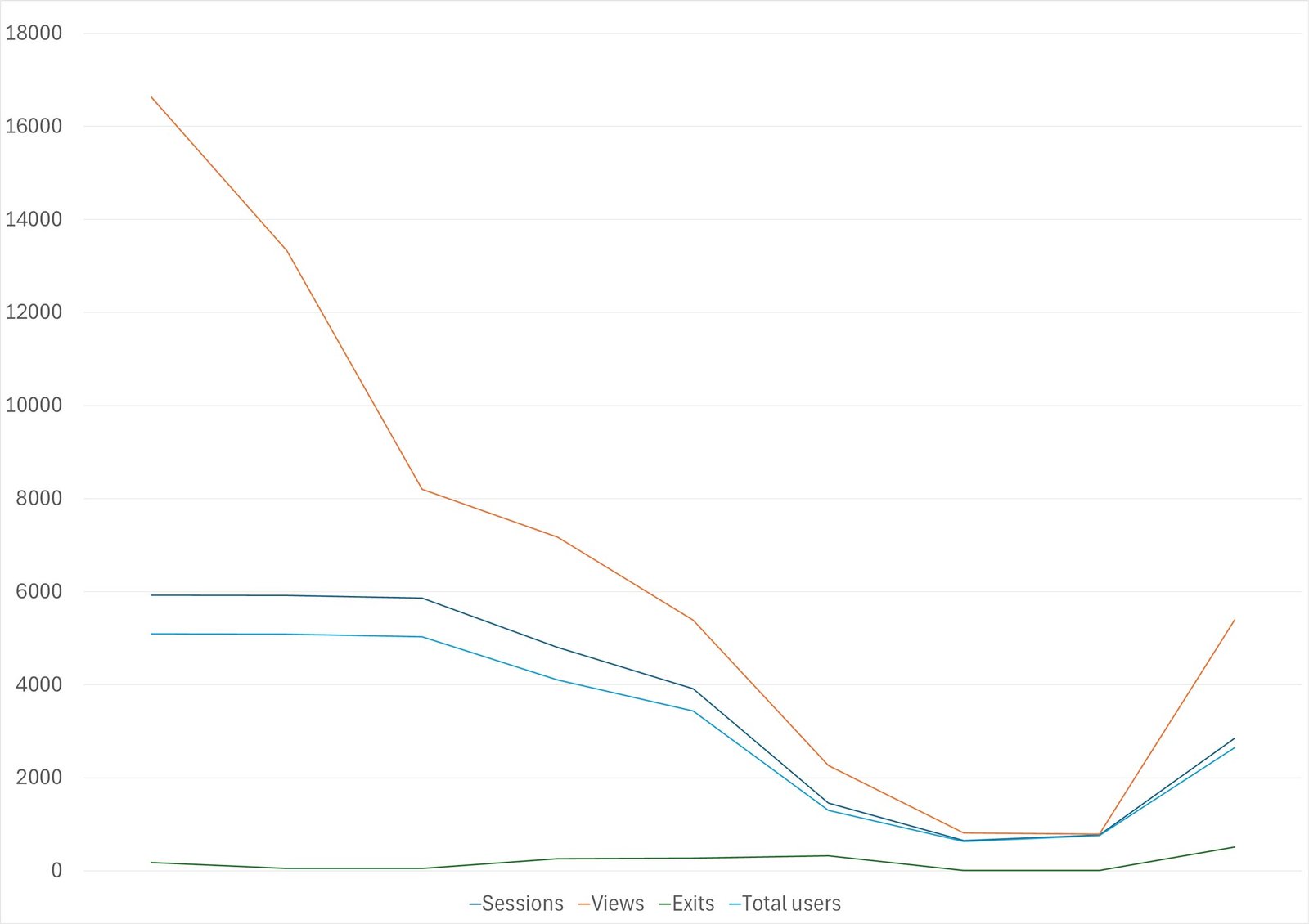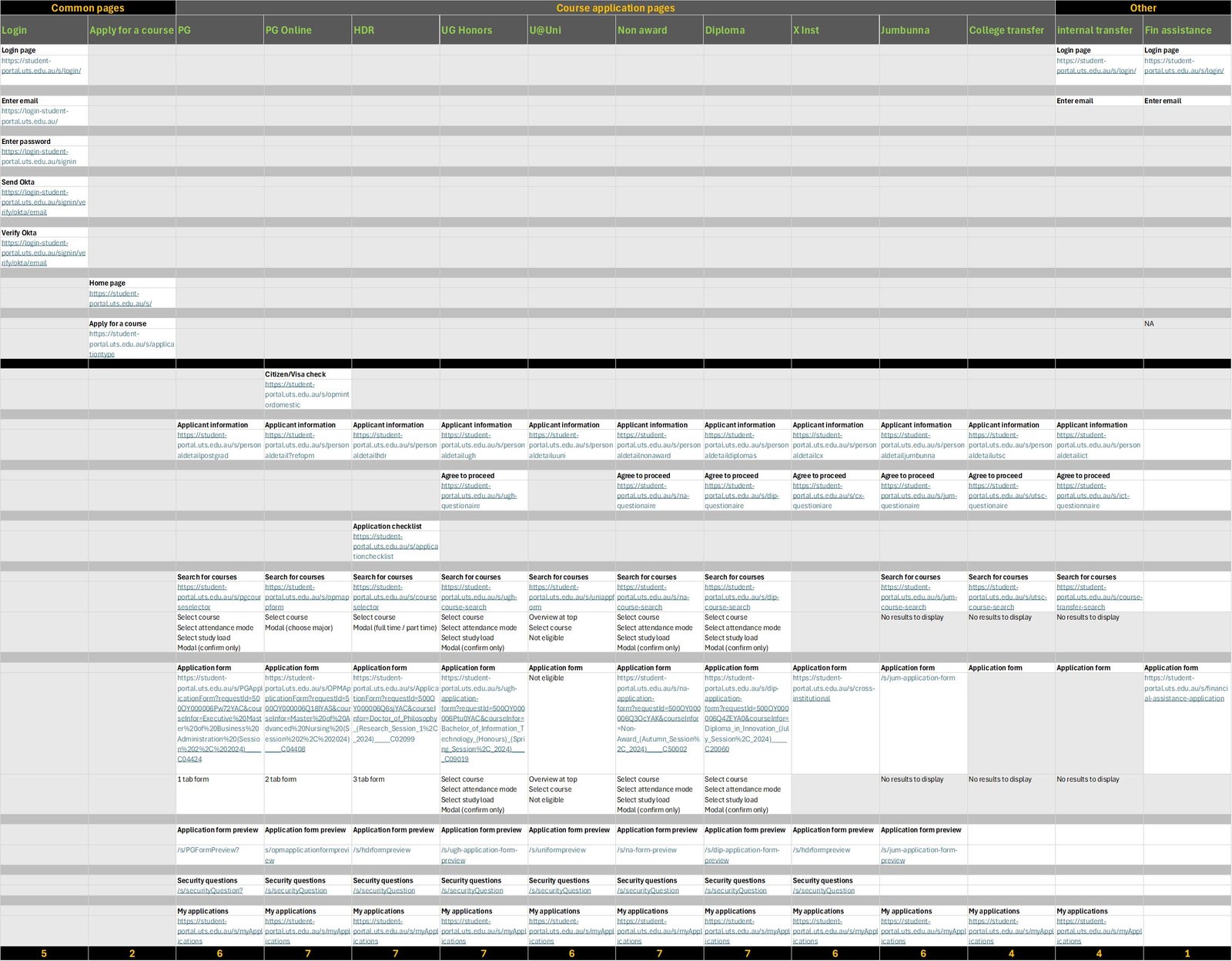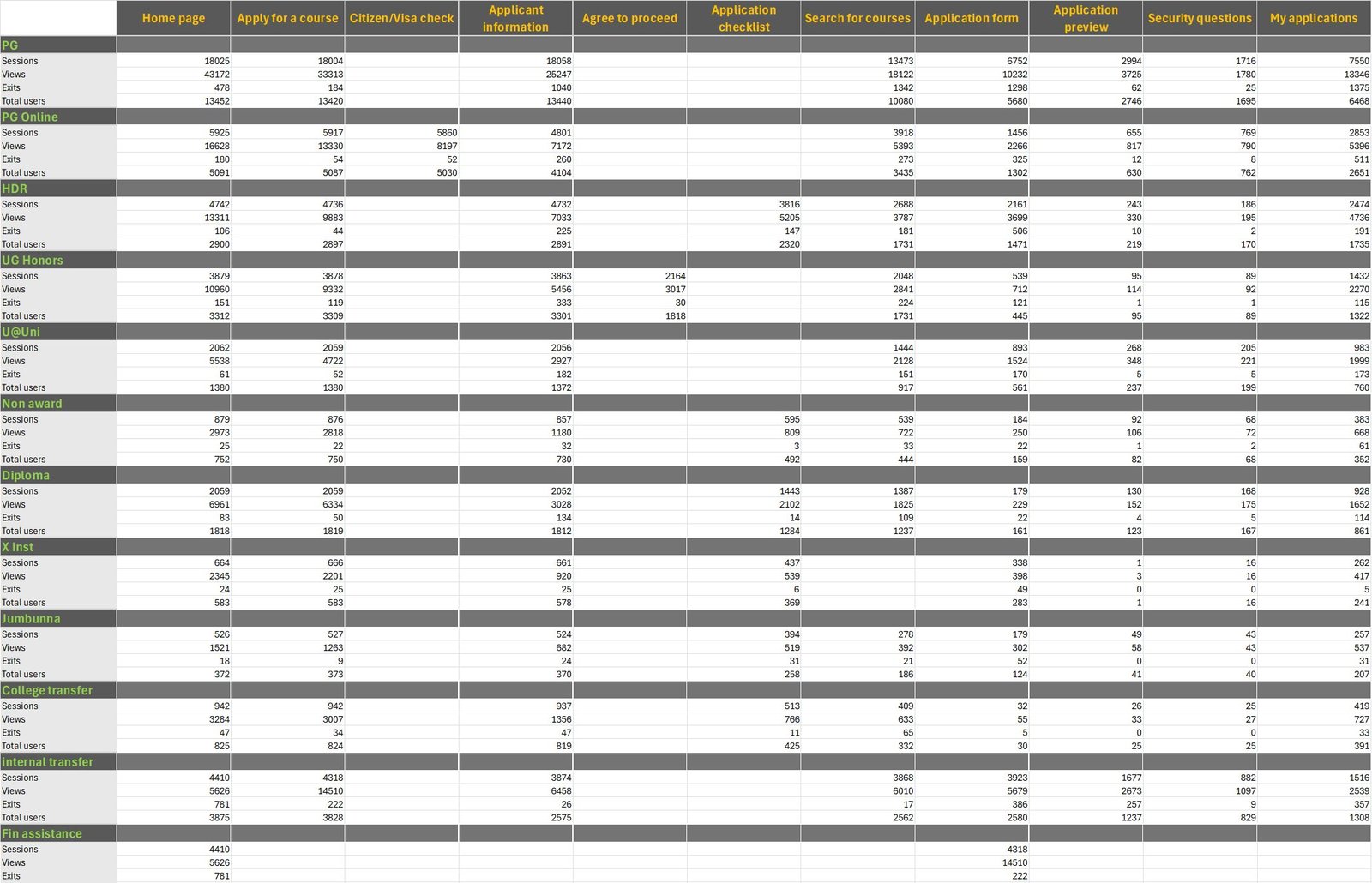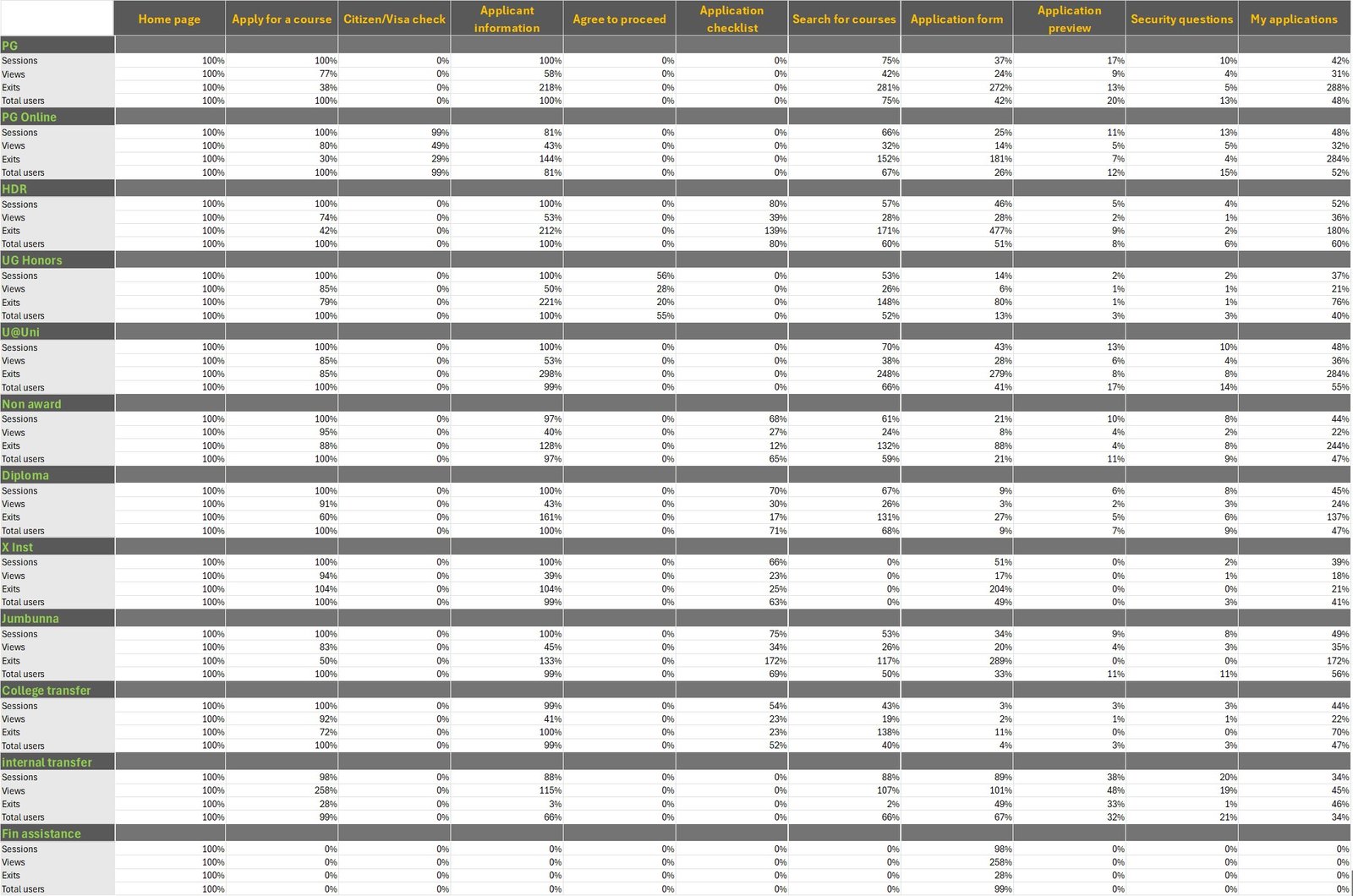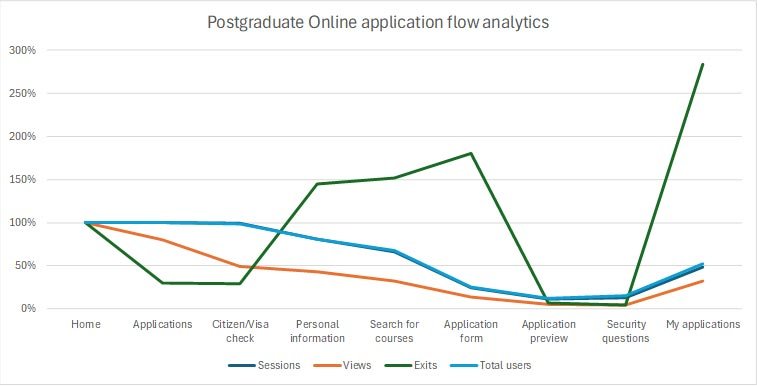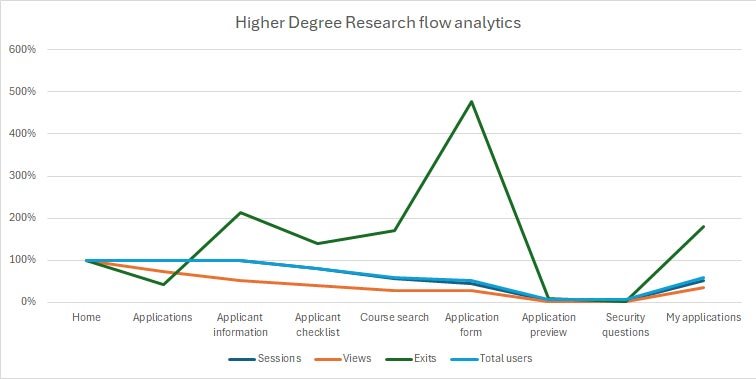Looking at the charts above, we can see there may be significant issues with the application flows.
Exits (the green line) initially decrease to less than 50% on all flows.
Exits spike quite significantly (to almost 500%) on the application form screen in the HDR application flow. This spike in exits may be explained by the nature of the form itself, which is lengthy and has a number of requirements that may not be addressed on the first visit to the form.
In the case of the PG and PGO flows, exits spike on the applicant information, course search, and application form. There are known usability issues on these screens, particularly the course search screen, and more so on the application screen.
In conclusion, a review of the HDR application form should be conducted to reduce the requirement of users to exit the form, as well as address usability issues. The PG and PGO flows should also be reviewed, to identify unknown usability issues, and to correct the known issues.
In the case of all applications, consideration could be given to stream lining the flows and reducing the number of pages required to complete the flow, which is currently adding complexity to the experience.
In conclusion, a review of the HDR application form should be conducted to reduce the requirement of users to exit the form, as well as address usability issues. The PG and PGO flows should also be reviewed, to identify unknown usability issues, and to correct the known issues.
In the case of all applications, consideration could be given to stream lining the flows and reducing the number of pages required to complete the flow, which is currently adding complexity to the experience.

